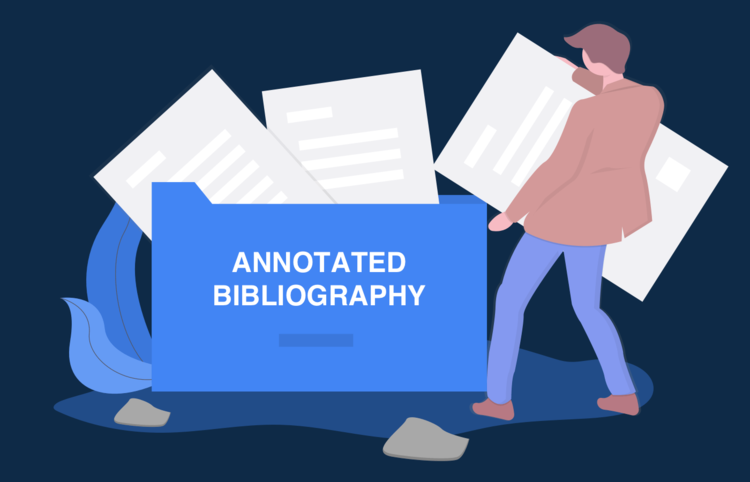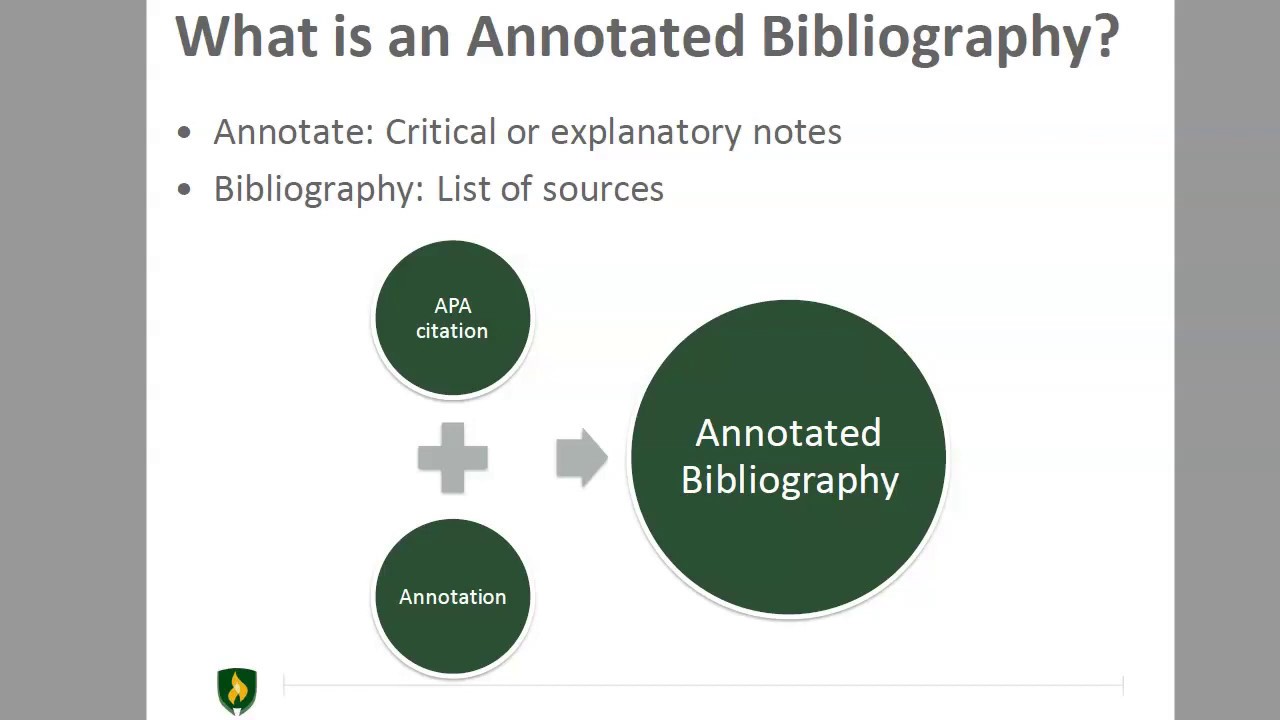What Is an Annotated Bibliography?
An annotated bibliography is a list of citations to books, articles, and documents. Each citation is followed by a brief (usually about 150 words) descriptive and evaluative paragraph, the annotation. The purpose of the annotation is to inform the reader of the relevance, accuracy, and quality of the sources cited.
An annotated bibliography is a unique form of bibliography providing a short summary or analysis of sources. While creating an annotated bibliography shouldn’t be stressful, many students might find the process hard.
Why Write Annotations?
One of the main questions students have is what the purpose of an annotation is. Surprise, it’s not just for your teacher. Annotations help you, too. Many times, you create your reference list as you begin researching your topic. Since you summarize the source in an annotated bibliography, you start to delve into the topic more critically to collect the information for your annotations. This helps you better understand the subject and sources to help you create your thesis.

Need Annotated Bibliography Help
Creating an annotated bibliography calls for the application of a variety of intellectual skills: concise exposition, succinct analysis, and informed library research. Get help at affordable price at Top Grade Professors
What are the components of an annotated bibliography?
Source Citation
Like a regular bibliography, an annotated bibliography provides
proper citation information for each source. All annotated bibliographies have a title, annotation, and citation. While the annotation is the same for all, the way you create your title and citation varies based on your style. The three main bibliography styles used include MLA, APA, and Chicago.
Source Summary
The first part of your entry will summarize the source concisely.
Aim not to dazzle your professor with extensive detail, but to state briefly the topic and main argument of your source.
Each annotation begins with an APA, MLA, or Chicago formatted reference and is followed by a summary of the source. The following questions can be used to craft the summary of the annotated sources:
- What was the purpose of this research?
- What was the problem the researcher(s) addressed?
- What are the research questions?
- What method and design were used in this research?
- What were the results of the research?
- What are the implications for future research?
Source Evaluation
Your source evaluation explains how the source contributes to a
particular topic. If you are producing an annotated bibliography in anticipation of writing a research paper, your professor might ask you to consider exactly how you will use the source in your paper.
- What does the source do for your argument?
- Is it one of the key pieces of evidence supporting your case?
- Does it offer crucial background information?
- Does it present a counterpoint to your argument that you need to address?
Other professors might want you to focus more on an evaluation of the source itself. In this case, be sure to discuss the strengths and weaknesses of the source. Did you find the argument persuasive? If so, explain what made the argument work well. Were you unconvinced by some of the author’s claims? If so, explain why.
You will also want to put the source into the context of the field as a whole. What does this source teach us that we did not know before? Is it filling in a particular gap in the field? Is it refuting a long–held assumption? Authors will often explain how they understand the contribution of their work, so begin by looking in the introduction for such information.
How to Write an Annotated Bibliography Step-by-Step

The Process
Creating an annotated bibliography calls for the application of a variety of intellectual skills: concise exposition, succinct analysis, and informed library research.
First, locate and record citations to books, periodicals, and documents that may contain useful information and ideas on your topic. Then starts evaluating sources to find the ones that will genuinely make your paper shine.
You’ll then begin writing your annotation for each different source. The final step is to choose your citation style. Now that you know the step process, let’s check out each step in turn.
Step 1: Determination of Sources
The first step is to decide which sources will be most critical for your topic. Often, your professor will assign an annotated bibliography relatively early on in the writing process, so perhaps you do not yet know exactly which sources will be the most important or how exactly you will use them.
To help you figure that out, think about the research questions that led you to your topic in the first place and then think about which sources would best help you answer those questions. A major benefit of writing an annotated bibliography is to better idea of your research to support your argument.
Step 2: Writing Main Argument
Once you have identified your key sources, the second step is to put into writing the main argument of each source. To help you glean the author’s argument, take a step back and look at the big picture.
What problem is this author trying to address? What holes in our knowledge does the writer intend to fill? If you had to describe this source to someone who had never read it, what would you say? If you are having trouble capturing the main idea, reread the author’s introduction and conclusion. In those sections, the author is likely to lay out in detail the larger argument.
Step 3: Supporting Main Argument
Now that you know the main argument of the source, the third step is to figure out how successfully the author supported the argument. Look back through the source and see exactly what evidence the author used to make his or her case.
Is there enough evidence? Do you agree with how the author interpreted the evidence? In this step, you will also want to put this source into conversation with other sources. Ask how this source fits in with the other ones you have read. Does it agree with them? Disagree? Did you find some sources more convincing than others? If so, why?
Step 4: Applicability
The fourth step is figure out how this source will be most helpful to you when writing your paper. Once again, return to your original research questions. If you have a working thesis statement, revisit that as well.
Ask yourself: What did I learn from this source? What gaps in my knowledge did this source help me fill? Now that I have read this source, has my thinking about my topic changed? Think about the actual structure or outline of your paper. At what point in your paper do you think you will draw on this source? Why will it be particularly useful to you at that point?
Step 5: Write the Annotation
The fifth step is to put it all together. At the top of each entry, write down the citation information. Then delve into your summary. In an annotated bibliography, every sentence counts, so make sure your writing is direct and that you articulate the main points you want to make efficiently.
Once you have summarized the source, move onto your evaluation, discussing whether or not you found the source convincing and/or how you will use it in your project. Be sure to include any other information your professor has directed.
The 4-Step For Ordering Annotated Bibliography
Are you overwhelmed by your Annotated Bibliography? Well, receiving assistance doesn’t have to be that hectic. Just within four quick steps, you will be relaxed, assured of quality grades. We will connect you with our quality academic writers for guaranteed success within a short duration. Here’s how:

Submit Guidelines
Use the order form to present all assignment’s instructions

Connect with a Writer
We assign you a professional assistant immediately

Writing Draft
Our writing team will draft an original paper and proofreads the paper to ensure high quality

Email Delivery
We upload the completed paper to your account and notify you via email
